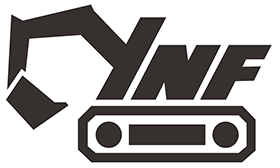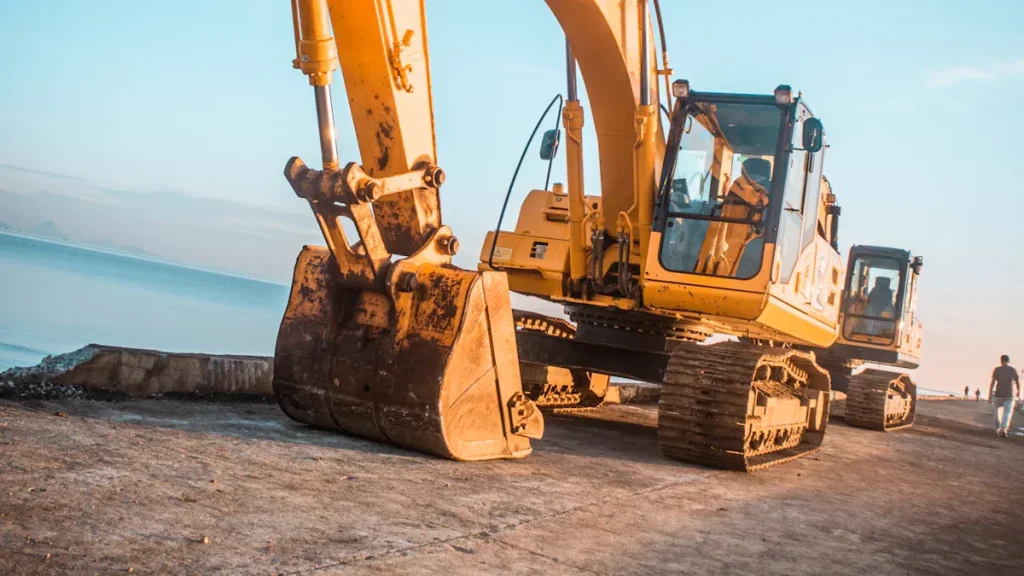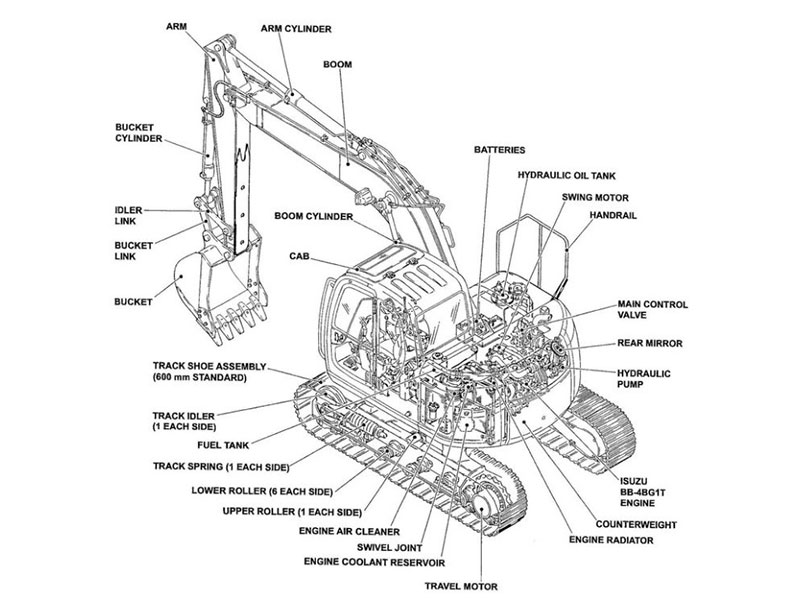
A final drive on an excavator is a very important part. It moves power from the hydraulic motor to the tracks. This lets your machine move and turn. You need the final drive excavator system to control speed and torque. This is important for both a mini excavator and a compact excavator. Knowing why a final drive matters helps you find problems early. It also helps keep your excavator working well.
The final drive is very important for how well your machine works and how long it lasts.
Regular maintenance, like checking and changing gear oil, stops small problems from getting worse. It also helps your excavator last longer.
Watching oil and hydraulic fluid levels, changing fluids on time, and finding leaks or noises early all help your final drive work longer.
Key Takeaways
The final drive takes power from the hydraulic motor to the tracks. It helps your excavator move, turn, and work with the right speed and strength.
Planetary gears inside the final drive make torque higher and speed lower. This gives your machine the power to dig, push, and climb safely on different ground.
Doing regular maintenance like checking and changing gear oil is important. You should also watch for leaks and keep seals clean. This helps your final drive last longer and stops expensive repairs.
Early signs of final drive problems are strange noises, oil leaks, slow or jerky track movement, and overheating. Finding these problems early keeps your excavator working well.
Following the maker’s maintenance schedule and fixing problems fast protects your machine. It also makes your machine work better and saves money over time.
Final Drive Excavator Function
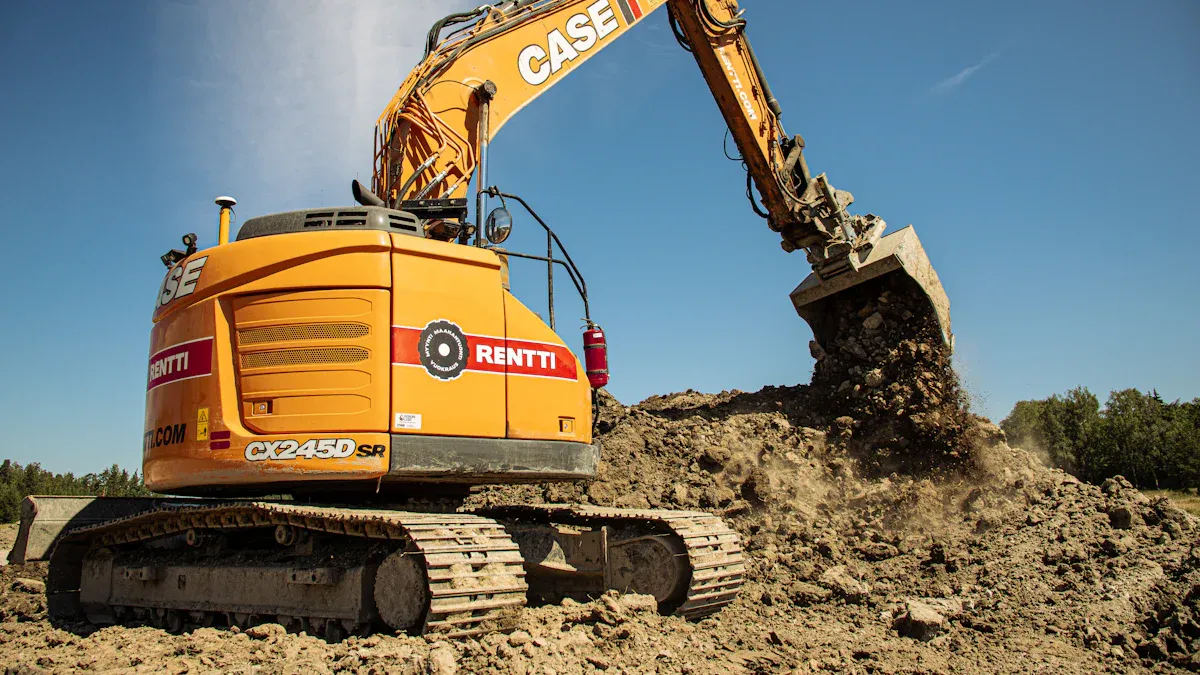
Power Transmission
When you use an excavator, the final drive system helps it move. The final drive gets power from the hydraulic motor. This power lets the tracks move and do hard work. The final drive changes fast, weak power from the engine into slow, strong power. It does this with gears called planetary gears. These gears help the excavator do tough jobs.
The final drive is the last part of the powertrain. It makes the power stronger and sends it to the tracks. This gives the excavator the strength to dig, lift, and push.
The final drive sends power to both tracks at the same time. This keeps the machine steady and helps it move smoothly, even on bumpy ground. The final drive also controls how fast the excavator goes. It does this by changing the flow of hydraulic fluid or the gear ratios. This is important for both mini and compact excavators. It helps you work safely and get the job done well.
Here is how the power moves in your excavator:
The hydraulic motor gets pressurized fluid and turns it into spinning power.
The final drive uses gears to make the power stronger and slower.
The stronger power moves the tracks so the excavator can travel and turn.
The final drive sends power to both tracks to keep movement steady.
The system changes speed and power for different jobs and ground types.
Torque and Speed Control
Torque is the force that helps your excavator push, dig, and lift. The final drive makes the torque from the hydraulic motor stronger with its gears. This extra torque helps the machine do hard work. The gears inside the final drive slow down the engine’s speed but make the torque higher. Having the right balance of speed and torque is important for good control.
Function Aspect | Explanation |
|---|---|
Torque Amplification | The planetary gear system slows down spinning and makes torque stronger, so the excavator can push heavy loads. |
Controlled Movement | Makes sure the tracks move smoothly and you can control them easily. |
Load Distribution | Sends power to both tracks, which lowers stress on parts and makes the machine last longer. |
Final Drive Ratio | Balances how fast the input spins and how strong the output is, so the excavator works well on all ground. |
The final drive system lets you control how fast or slow the excavator moves. When you need more power, like digging or climbing, the final drive gives more torque and less speed. When you want to move fast, the system gives more speed and less torque.
The final drive also helps the excavator work on different ground. For example, a mini excavator with a good final drive can move on mud, gravel, or hard ground. The tracks’ pattern and width, plus the power from the final drive, help the machine grip the ground and not slip. If you keep the final drives clean and tight, you get the best grip and control.
Tip: If you hear weird noises or feel it is hard to turn, check your final drive system. Fixing problems early can stop bigger issues and keep your machine working well.
A strong final drive system is needed for smooth movement, good control, and great performance on any job site.
Excavator Final Drive Components
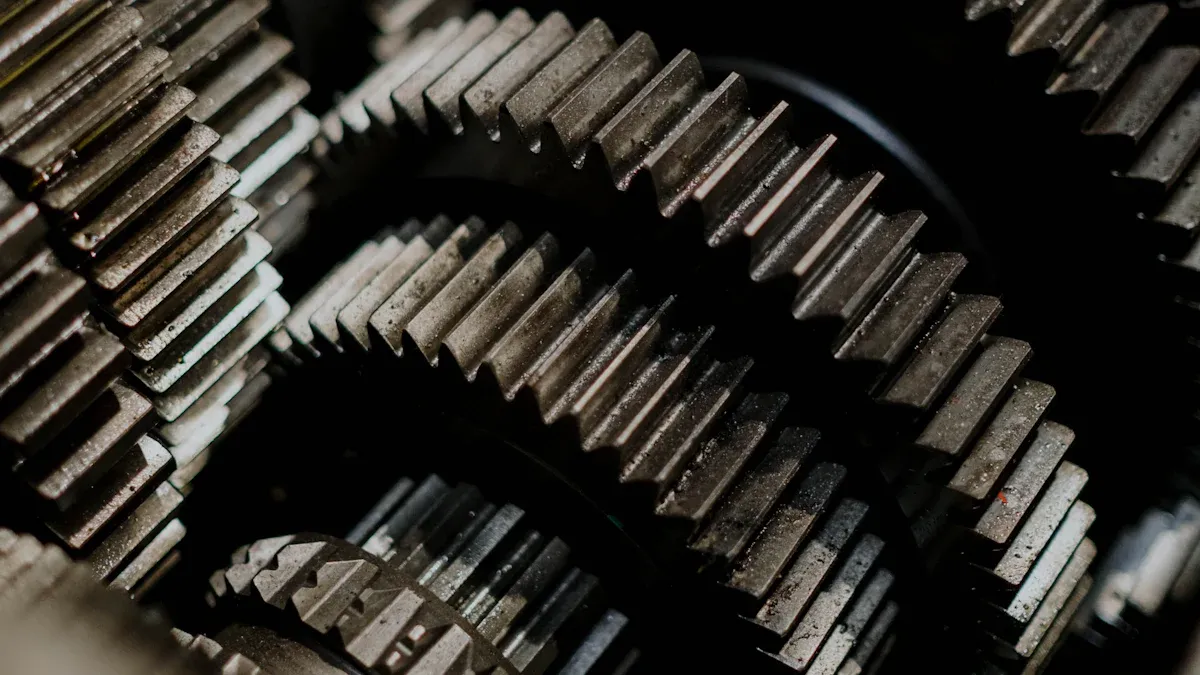
When you look at an excavator final drive, you see a strong system with many important parts. Each part works together to help the excavator move and turn. These parts also help it do hard jobs. If you know about these parts, you can find problems early. This helps your machine work well for a long time. Here is a quick look at the main final drive parts and what they do:
Component | Function |
|---|---|
Final Drive Housing | Keeps all the inside parts safe and holds oil for smooth working. |
Planetary Gears | Make torque stronger and slow down speed, so the excavator can do heavy work. |
Sun Gear | Sends power from the motor to the planetary gears. |
Ring Gear | Works with planet gears to make torque stronger and control how the machine moves. |
Ball Bearings | Help the parts spin easily and cut down on friction. |
O-Rings and Seals | Keep oil in and dirt out, so the gearbox and other parts stay safe. |
Hydraulic Motor
The final drive motor is also called the hydraulic travel motor. It is the main part of the excavator final drive. It uses high-pressure oil from the hydraulic system and turns it into spinning power. This spinning power moves the tracks. The final drive motor is lighter and works better than old gear systems. You get better control and use less fuel. The hydraulic travel motor also needs less care, so your excavator can work more. Radial piston motors are used in the best final drives. They give you lots of power and last a long time.
Planetary Gears
Planetary gears are very important parts inside every excavator final drive. These gears are set up with the sun gear in the middle and planet gears around it. When the motor spins the sun gear, the planet gears turn and roll inside the ring gear. This setup gives you strong torque and slow speed. That is good for moving heavy things. The planetary gears share the work, so the final drives last longer and work better. You can see how these gears fit together in a final drive diagram.
Planetary gears make torque stronger and slow down speed.
They share the work, so parts do not wear out fast.
The small design saves space in the final drive.
Gearbox and Seals
The final drive gearbox links the hydraulic travel motor to the tracks. It makes torque stronger and helps power move smoothly. Good seals are very important parts. They keep oil inside the gearbox and stop dirt from getting in. If seals break, oil leaks out and dirt gets in. This can hurt your final drive. Always look at the final drive diagram to see where seals and gears are. Keeping oil at the right level and seals in good shape helps your final drives last longer and keeps your excavator safe.
Tip: If you see oil leaks or hear strange sounds, check your final drive parts right away. Fixing things fast can stop bigger problems and keep your excavator working hard.
How Final Drives Work
Hydraulic System Integration
You control your excavator with the help of a powerful hydraulic system. This system uses oil under high pressure to move heavy parts. The excavator final drive connects directly to this hydraulic system. When you move the controls, the engine powers hydraulic pumps. These pumps send pressurized fluid through hoses to the final drive motor. The final drive motor sits at the drive sprockets, right where the tracks begin.
The hydraulic motor inside the excavator final drive takes this pressurized fluid and turns it into spinning force. This force is strong enough to move the entire machine. The final drive system uses this energy to rotate the tracks. You get smooth, steady movement because the hydraulic system can control both the speed and the power sent to the final drive. This setup lets you move your excavator with precision, even when you work on rough or uneven ground.
The final drive is the last gearset in the drivetrain. It changes the fast spinning from the engine into slow, powerful turning. The planetary gears inside the final drive parts make this possible. They increase torque and reduce speed, so your excavator can push, dig, and climb. The hydraulic system and the final drive work together to give you full control over your machine’s movement.
Note: The hydraulic system also helps keep the tracks aligned and tight. This makes sure your excavator moves straight and does not slip.
Step-by-Step Operation
You might wonder how the excavator final drive actually moves your machine. The process starts when you use the controls in the cab. Here is a simple step-by-step look at how the final drive system works:
The engine powers the hydraulic pumps.
The pumps pressurize hydraulic fluid.
This pressurized fluid travels through hoses to the hydraulic motor on the final drive.
The hydraulic motor converts the fluid’s energy into spinning motion.
The planetary gear system inside the final drive parts reduces the speed and increases the torque.
The output shaft of the final drive turns the sprocket.
The sprocket’s teeth grab the track links.
The tracks move in a loop, carrying the excavator forward or backward.
When the final drive motor runs, it sends torque to the sprocket. The sprocket grabs the track links, just like a bicycle chain wraps around a gear. This action pulls the tracks along the ground. The excavator final drive makes sure the tracks move at the right speed and with the right amount of force. You can turn, climb, or travel across different surfaces because the final drive system gives you the power and control you need.
The final drive parts, like the hydraulic motor, planetary gears, and seals, all work together. If any part fails, your excavator may slow down, lose power, or stop moving. A functioning final drive keeps your machine working hard every day.
Tip: Always check your final drive parts for leaks, noises, or slow movement. Early checks help you avoid bigger problems and keep your excavator running smoothly.
Final Drive Maintenance
Signs of Failure
You should watch for early signs of trouble in your final drive. Finding problems early helps you avoid big repairs. It also keeps your machine working well. Here is a table that shows common signs and what they mean:
Sign / Symptom | Description |
|---|---|
Unusual Noises | You might hear grinding, whining, or knocking sounds. |
Vibrations | The machine shakes or wobbles too much when you use it. |
Fluid Leaks | Oil or hydraulic fluid leaks from seals or the final drive. |
Overheating | The final drive feels hot or smells like something is burning. |
Loss of Power / Weak Speed | The excavator moves slower or has trouble with easy jobs. |
Jerky or Unresponsive Movement | The tracks jump, pause, or do not move smoothly. |
Contamination / Seal Failure | Dirt or water gets inside, which causes parts to wear out faster. |
Tip: If you see any of these signs, stop and check your machine. Fixing problems early can stop bigger breakdowns.
Best Practices
You can help your excavator last longer with regular care. Follow these best ways to take care of your final drive:
Check gear oil every 100 hours or once a month.
Change the final drive oil at least once each year.
Clean and check case drain filters often so they do not clog.
Look for leaks and fix them as soon as you see them.
Keep the undercarriage clean to stop dirt from hurting seals.
Follow the maker’s maintenance schedule for your machine.
Teach operators to use the excavator right and spot warning signs.
Doing regular care helps you avoid sudden breakdowns and high repair bills. These steps also protect your machine and keep it safe.
Troubleshooting
If your excavator has final drive problems, use these steps to find and fix them:
Check oil levels and add more if needed.
Look for leaks near the final drive and seals.
Listen for grinding or whining sounds when using the machine.
Check the undercarriage for damage or things stuck in it.
Test track tension and look for worn rollers or idlers.
Make sure the engine runs fast enough and hydraulic pressure is good.
Replace seals, bearings, or filters if they are worn out.
If it gets too hot, check for low oil or worn parts.
Choose to repair or replace the final drive based on how bad the damage is.
Note: Always use good parts and follow the operator’s manual. If you cannot fix the problem, call a professional for help.
Knowing how your excavator’s final drive works helps you keep it strong. If you learn about the parts and what they do, you can find problems early. This helps you save money and avoid big repairs.
Checking your machine often and using the right oil stops breakdowns. This keeps your excavator working.
If you hear strange sounds or see leaks, check your machine fast. Fixing things early protects your machine and helps it work better.
Taking good care of your excavator makes it last longer and do a better job.
Watch for any changes in your excavator. Acting fast keeps your machine safe and ready for hard work.
FAQ
What does a final drive do on an excavator?
The final drive sends power from the hydraulic motor to the tracks. You use it to move, turn, and control your excavator. It helps you get the right speed and torque for tough jobs.
How often should you check final drive oil?
You should check the final drive oil every 100 hours or once a month. Clean oil keeps your final drive working well. Dirty or low oil can cause damage.
Tip: Set a reminder to check oil on a regular schedule.
What are signs your final drive needs repair?
You hear grinding or whining noises.
You see oil leaks.
The tracks move slowly or jerk.
The final drive feels hot.
If you notice these signs, stop and inspect your machine.
Can you replace a final drive yourself?
You can replace a final drive if you have the right tools and skills. Many people call a professional for this job. The process can be heavy and complex.
Safety first: Always follow your machine’s manual and use proper lifting equipment.
